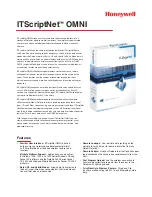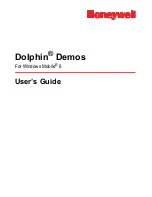
CHAPTER 2 Media Flow Manager Overview
Media Flow Manager Administrator’s Guide
28
Central Management Console
Copyright © 2010, Juniper Networks, Inc.
Identities
An identity is an RSA or DSA key pair that can be used to log into a managed appliance. Each
identity has a name, which is an administrator-assigned string used to refer to it. Most
commonly, the administrator can ask for an identity to be generated automatically; but an
identity can also be created by specifying the public and private key directly. When specifying
the credentials to use to log into an appliance, the administrator can provide a username and
the name of the identity to use, as an alternative to a username and password.
Profiles
A profile is a stored list of CLI commands that can be run on remote appliances or groups.
When a profile is applied, the non-local configuration on the remote system is first reset to its
defaults. "Local" configuration in this context is anything system-specific that should not be
shared between systems. By default, this is the
network interface
and
route
configurations
required for basic network connectivity.
Profiles can be created from the CLI by specifying their lists of commands directly, or from the
Web-based Media Flow Manager Central Management Console (CMC). The CMC lets you
create profiles by filling out configuration forms, much like you would do to configure an
appliance directly. For example, to create a profile that configures NTP on a remote appliance,
the CMC has a special NTP configuration page that looks much like the NTP configuration
page in the Management Console of a Media Flow Controller. You enter the NTP configuration
here, and when you press
Apply
, the commands to configure NTP in the manner specified are
added to the selected profile. The Central Management Console also allows you to type CLI
commands to be added to a profile, for full manual control.
Status Criteria
A status criterion is one test to be applied to a remote managed appliance to determine its
status or health. These criteria are checked periodically and the results recorded, with the goal
of helping you notice problems in the appliances being managed. You cannot create status
criteria in CMC, but you can enable or disable specific status criteria.
Rendezvous
The rendezvous feature mainly impacts appliances and identities on the server side. The
server is generally configured with one or more identities at manufacture time, which it later
uses to log into clients to manage. The server and client are configured with other information
that allow them to find and authenticate each other. The rendezvous process then ultimately
results in new appliance records being added semi-automatically to the server's configuration.
An administrator at the CMC server must confirm each client before the server starts
managing it. The CMC server may also be put into an auto-accept mode where it immediately
accepts any client that presents itself. The server may then log into each approved client, also
using preconfigured credentials.
Содержание MEDIA FLOW MANAGER 2.0.2 - ADMINISTRATOR S GUIDE AND CLI
Страница 6: ...Media Flow Manager Administrator s Guide VI Copyright 2010 Juniper Networks Inc...
Страница 12: ...TABLE OF CONTENTS Media Flow Manager Administrator s Guide XII Copyright 2010 Juniper Networks Inc...
Страница 16: ...LIST OF FIGURES XVI Copyright 2010 Juniper Networks Inc...
Страница 152: ...CHAPTER 5 CLI Commands Media Flow Manager Administrator s Guide 152 write Copyright 2010 Juniper Networks Inc...
















































